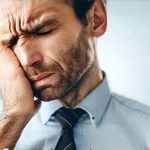Prostatitis is a relatively common condition affecting men, characterized by inflammation of the prostate gland. Symptoms can range from mild discomfort to severe pain, impacting quality of life significantly. Many factors are believed to contribute to its development or exacerbation, leading individuals to question everyday activities and their potential role in symptom presentation. One such activity frequently brought up in discussions about prostatitis is bicycle riding, prompting concerns about a possible link between the two.
This article aims to explore the complex relationship between cycling and prostatitis, examining current research and understanding surrounding this topic. It will delve into the potential mechanisms through which cycling might influence prostate health, as well as outlining what evidence exists – or doesn’t exist – to support these theories. Ultimately, the goal is to provide a balanced overview of the issue, empowering readers with information to make informed decisions about their health and activity levels.
Cycling and Prostate Health: An Overview
The question of whether cycling impacts prostate health isn’t new. For years, concerns have been raised about potential negative effects, particularly relating to prostatitis. This stems primarily from the pressure exerted on the perineum – the area between the genitals and anus – during cycling. However, it’s important to understand that correlation doesn’t equal causation; simply because a symptom appears after or alongside an activity doesn’t necessarily mean one causes the other.
The connection is complex and often debated within medical communities. Many factors beyond cycling can contribute to prostatitis, including age, genetics, lifestyle choices, and underlying health conditions. Therefore, attributing prostatitis solely to bicycle riding is overly simplistic and inaccurate.
Potential Mechanisms of Influence
Perineal Pressure & Prostate Inflammation
Cycling inherently involves prolonged pressure on the perineum, due to sitting on a narrow saddle. This pressure could theoretically contribute to inflammation or irritation of the prostate gland, which sits relatively close to this area. The idea is that sustained compression might disrupt blood flow to the prostate, potentially leading to discomfort and exacerbating existing inflammatory processes. However, the extent to which perineal pressure actually translates into significant prostatic inflammation is still under investigation. Studies have produced varying results, with some showing minimal impact and others suggesting a potential link in certain individuals.
It’s also crucial to note that the type of saddle used plays a significant role. Narrow, hard saddles generally exert more pressure than wider, padded ones designed to distribute weight more evenly. Similarly, bike fit – ensuring proper seat height and handlebar positioning – can affect how much pressure is directed towards the perineum.
Impact on Pelvic Floor Muscles
The pelvic floor muscles play an important role in supporting the prostate gland and regulating urinary function. Prolonged cycling, particularly with poor posture or saddle discomfort, might contribute to tension or imbalances within these muscles. Tightened pelvic floor muscles could potentially exacerbate prostatitis symptoms by putting pressure on the prostate and interfering with its normal functioning.
Conversely, some research suggests that strengthening pelvic floor muscles can actually be beneficial for managing chronic prostatitis symptoms. This highlights the nuanced relationship between cycling, pelvic floor health, and prostatic function – it’s not necessarily about avoiding cycling altogether but rather focusing on proper technique and potentially incorporating targeted exercises to maintain muscle balance.
Blood Flow & Oxygenation
The prostate gland requires adequate blood flow and oxygenation to function optimally. As mentioned earlier, perineal pressure from cycling could theoretically compromise circulation to the area. Reduced blood flow might impair the prostate’s ability to heal or repair itself, potentially contributing to chronic inflammation or worsening symptoms.
However, it’s important to remember that regular exercise, including cycling, generally promotes overall cardiovascular health and improved blood circulation. The key lies in finding a balance between the potential for localized pressure on the perineum and the broader benefits of physical activity.
Ultimately, the relationship between bicycle riding and prostatitis is not straightforward. While prolonged perineal pressure could theoretically contribute to inflammation or discomfort, it’s essential to acknowledge that many other factors play a role in developing and managing this condition. The type of saddle used, bike fit, pelvic floor muscle health, and overall cycling technique all influence the potential impact on prostate health. More robust research is needed to fully understand these interactions and provide definitive guidance for cyclists concerned about their prostate health. Individuals experiencing prostatitis symptoms should consult with a healthcare professional for personalized advice and treatment options, rather than relying solely on information found online or through general sources.





















